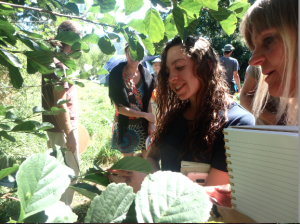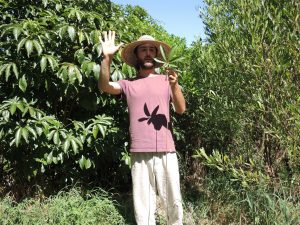All permaculture systems are created based on the concepts of natural morals and principles. We spent some time looking into why nature is our best teacher and this method of thinking is so efficient!
Nature is not a machine, it’s inner workings are non-linear, and the connections between all elements are of greater complexity than we can ever understand. There are no lines between organisms, and every element is in constant interaction with itself and everything around it. There is no such thing as an “end” of a stream or a “top” of a tree, as energy is exchanging between every cell of all life, every second of the day. An invisible web of nodes, connected by links, forms a resilient loop, perfected by evolution surrounds every ecosystem.
The whole universe is a network of nested systems, an atom within a cell, a cell within a tissue, a tissue within a body, zooming out all the way to the limitless boundaries of our cosmos. The stronger the bonds both within and between these networks, the more resilient it is to change and destruction.
In permaculture design, it is important to remember that every particle of soil, every plant, every ray of sun, and every drop of rain, is serving a purpose in the design, and it is up to us to figure out how to improve the way each element is connecting and benefiting one another. We can identify “open” loops, sources of energy that are flowing outwards rather than within the network, and convert them into feedback loops that can contain and sustain all nutrients from each other, without depletion or leaks. It is also important to consider a place’s position within its neighborhood, a watershed, a biome region, a continent, and a globe. When design decisions are made, analysis must be made with the idea of accounting for all of these connections. Aristotle said “The whole is greater than the sum of all its parts”, which is extremely relevant to permaculture, as the purpose is to develop progressively more and more effective whole systems through increasing the functionality of their parts. As humans have interfered and artificially changed the course of these evolutionary systems, we have created immense imbalances within ecosystems, and it is up to us to now incorporate the age-old, time-tested successful method of integrated, mutually beneficial relationships for strength.
Additionally, the more diversity present in a landscape allows for heightened productivity and acts as a safety net. If we plant, say, 10 varieties of a crop versus one, it is more likely that we can obtain a significant (and more interesting) yield because if one species doesn’t produce, there will still be nine others. Stability comes from a high number of varying aspects filling different niches, utilizing their spaces and gifts fully.
Stepping away from the land-based side of things, societies that embrace differences and individuality, allowing for positive social interaction through equality, are more resilient to stress through community. If every human in a culture is supported and embraced for their unique strengths, they can flourish to their optimum potential.
Our current state is a society that is streamlined for efficiency of economics and specialization of labor. Most of our cultural designs in “developed” countries value the rich and privileged, and our decisions are made with a money-driven mind considering only the aspects that suit us rather than the whole picture.
To create a world in which humans can thrive, we must build a network like nature does, supporting every node with a strong link.

Learning from the best teacher of all, nature!

Leo teaching about native plants


